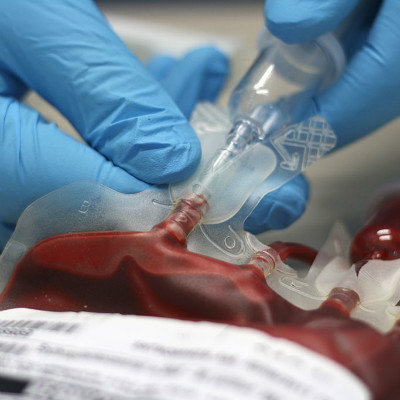What is renal hypertension
summary
Renal hypertension is a kind of hypertension directly caused by kidney disease, which refers to the manifestation of hypertension in the process of kidney disease. It accounts for about 5% - 10% of adult hypertension, and is the most common in secondary hypertension. It may be caused by the increase of blood volume, the activation of renin angiotensin aldosterone system, or the decrease of vasodilator activity, especially the increase of diastolic blood pressure. What is renal hypertension.
What is renal hypertension
First, renal hypertension can be divided into renal vascular hypertension and renal parenchymal hypertension. Renal artery stenosis leads to hypertension caused by renal ischemia, which is called renal vascular hypertension; hypertension caused by unilateral or bilateral renal parenchymal diseases is called renal parenchymal hypertension.

Second: almost every kind of renal parenchymal disease can cause hypertension, but the chances of hypertension are different for different pathological types of renal diseases. Hypertension rarely occurs in small lesions and focal proliferative glomerulonephritis, while diffuse proliferative glomerulonephritis is more prone to hypertension. Renal parenchymal hypertension is related to the functional state of glomeruli. When glomerular function decreases, blood pressure tends to decrease The incidence of hypertension in the late stage of renal failure was 83%.

Third: blood pressure disease can directly cause kidney damage, namely the so-called hypertensive nephropathy, including benign renal arteriosclerosis and malignant renal arteriosclerosis. Benign renal arteriosclerosis is a kind of hyaline degeneration of renal arterioles caused by long-term hypertension, which leads to renal ischemia, hypoxia, fibrosis, sclerosis, necrosis, and then renal insufficiency, which will eventually develop to uremia. The degree of pathological changes is related to the duration and severity of hypertension. The pathological changes of glomeruli are fibroid and hyalinization, hyalinization of entering artery, atrophy of renal tubule, renal interstitial fibrosis, interlobar artery and arcuate artery may also have different degrees of intimal thickening. Malignant renal arteriosclerosis is a diffuse lesion of renal arterioles caused by rapid development of hypertension, which leads to rapid deterioration of renal function. The histological features of the lesion were cellulose like necrosis of interlobar arteries and arterioles. The proliferation of smooth muscle cells in the intima and surface layer of the afferent arterioles and interlobar arterioles was observed. The vast majority of patients with hypertension can have renal changes, with the growth of age, glomerulosclerosis is also aggravated, about 15% of hypertension will develop into uremia. In China, the statistics of hypertension in 1998 was 110 million, with an annual growth rate of 3.5 million. In 2003, it was 127.5 million, accounting for 10% of the total population. There is one hypertension in every three families or no 10 people. There are about 600 million hypertensive patients in the world. In other words, there are 10 patients with hypertension in 100 people, and one and a half of them will become uremia. This is a terrible number, which should arouse the vigilance of the whole society.

matters needing attention
At present, the most effective method for the treatment of hypertensive nephropathy is the use of micro traditional Chinese medicine penetration therapy. On the one hand, it improves blood vessels at all levels according to the characteristics of hypertension, on the other hand, it repairs the damaged kidney, thus verifying the treatment concept of "treat the disease first, and cure the disease by itself".















